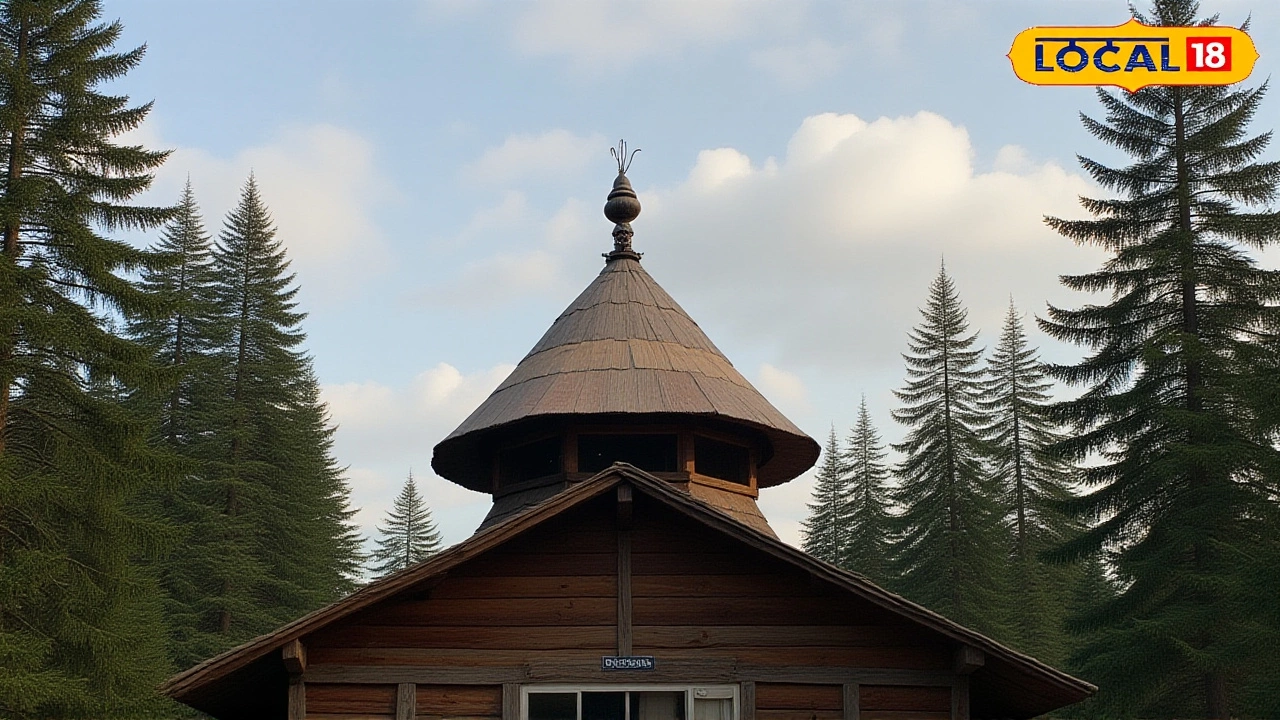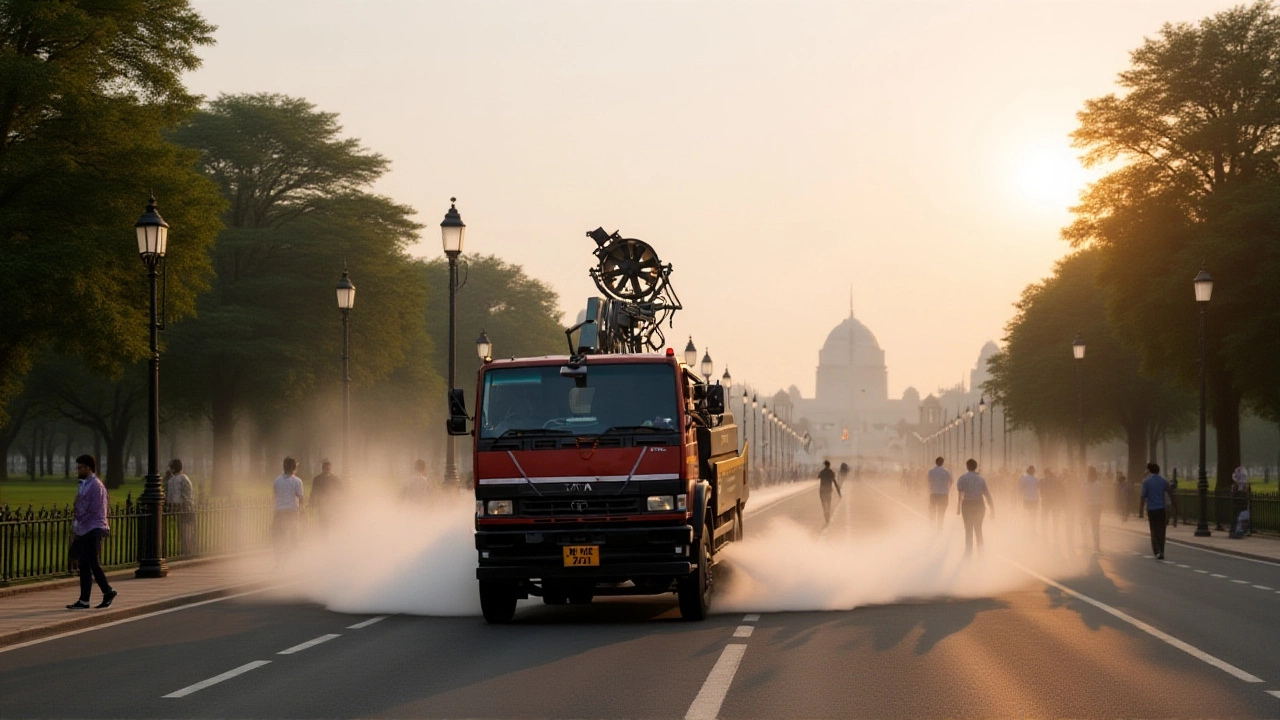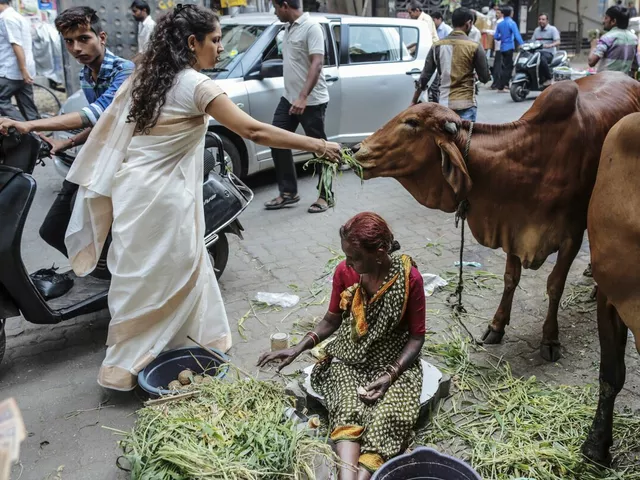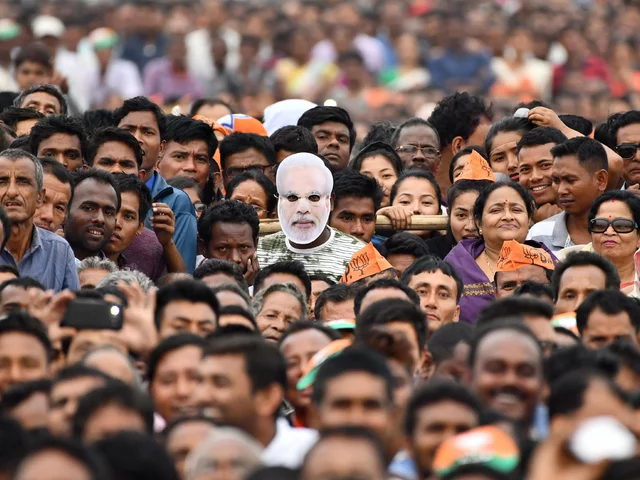Cyclone Montha triggers heavy rain alerts across Rajasthan, Madhya Pradesh
On October 28, 2025, residents of Jaipur, Bhopal, and other cities across northern India woke up to the rumble of distant thunder and the sharp scent of wet earth — a sign that Cyclone Montha was no longer just a distant storm over the Bay of Bengal, but a force reshaping weather patterns across the subcontinent. The India Meteorological Department (IMD) issued its most urgent warning yet: seven districts in Rajasthan — Bhilwara, Bundi, Kota, Rajsamand, Sirohi, Salumbar, and Udaipur — were under a red alert for torrential rain, lightning, and wind gusts exceeding 60 km/h. The twist? This wasn’t just a local monsoon flare-up. It was the far-reaching echo of a cyclone named after a fragrant Thai flower, now sweeping across India’s heartland.
How a Thai Cyclone Reached Rajasthan
Named by Thailand — where “Montha” means a sweet, blooming blossom — the cyclone formed over the southeastern Bay of Bengal and began its slow, powerful crawl toward Andhra Pradesh’s coast. By October 27, it had intensified into a severe cyclonic storm, pulling moisture-laden air northward like a giant vacuum. The result? An unusual surge of monsoon remnants, funneled by upper-level winds, dumped rain on Rajasthan — a state more accustomed to dust storms than downpours.
That morning, Khatoli in Kota division recorded 69.0 mm of rainfall in just 24 hours — the highest in the region since 2021. Nearby, Bundi, Udaipur, and Pratapgarh saw 25–75 mm of rain, equivalent to 1–3 inches. “It’s not just rain,” said local farmer Rajesh Meena from Kota. “It’s the kind that floods fields, washes away seedlings, and makes roads disappear overnight.”
The Wider Rain Belt: From Jaipur to Bhopal
The impact didn’t stop at Rajasthan’s border. The IMD extended yellow alerts to 28 districts across the state — including Jaipur, Ajmer, Bharatpur, and Jodhpur — with isolated heavy showers expected through October 29. Meanwhile, in Bhopal, Indore, and Jabalpur, light rain was forecast, bringing temporary relief from a stifling heatwave that had lingered since mid-October.
Temperatures in Madhya Pradesh dipped slightly, hovering between 25°C and 32°C — a welcome change after days of 38°C highs. But the rain came with a cost: local authorities in Bhopal warned of waterlogging in low-lying areas like Habibganj and Kolar Road, urging commuters to avoid flooded underpasses. “We’ve seen this before,” said city engineer Anjali Rao. “One heavy spell, and drainage systems built in the 1990s just buckle.”
Thunder, Lightning, and the Cost of Unpreparedness
What made this event more dangerous than a typical pre-winter shower was the combination of lightning and sudden wind bursts. In Bikaner and Balotra, afternoon thunderstorms knocked out power for over 40,000 households. Emergency services reported 12 lightning strikes across the region in 24 hours — one of which injured a schoolteacher in Jalore district.
At night, dew accumulated heavily in rural pockets, turning fields into muddy traps. “We’ve never seen this much moisture in October,” said Dr. Vikram Singh, a climatologist at the University of Rajasthan. “It’s not just the cyclone. It’s the atmospheric setup — a high-pressure system over northwest India is locking in the moisture, like a lid on a pot.”

What Comes Next: Cold on the Horizon
Here’s the thing: this rain isn’t just a disruption — it’s a transition. Meteorologists say the moisture surge from Cyclone Montha is acting as a prelude to a full-blown winter chill. By November 1, temperatures in Jaipur and Udaipur could drop below 12°C at night — a full 8–10 degrees cooler than last year’s average for this date. “The rain is washing out the heat,” said IMD senior forecaster Priya Mehta. “What follows will be crisp mornings, foggy valleys, and the kind of cold that makes you pull out your woolens early.”
For farmers in Kota and Bundi, the rain is a mixed blessing. While it recharges groundwater and eases irrigation stress, the intensity has damaged standing crops of mustard and gram. “We planted early hoping for a good season,” said farmer Lata Devi from Sirohi. “Now we’re praying the sun comes back before the roots rot.”
Why This Matters Beyond the News Headlines
This event isn’t an anomaly — it’s a pattern. Over the past five years, Rajasthan has seen a 37% increase in October rainfall, according to IMD’s long-term data. Climate models suggest warming in the Bay of Bengal is strengthening cyclones farther north than before, pushing their rain shadows into traditionally dry zones. What was once a monsoon tail-end phenomenon is now becoming a semi-annual feature.
For urban planners, it’s a wake-up call. Jaipur’s drainage system, designed for 25 mm/hour rainfall, faced 48 mm/hour during the peak. “We’re building cities for a climate that no longer exists,” said urban planner Arjun Mehta. “Either we upgrade infrastructure, or we’ll keep seeing flooded markets, stranded trains, and broken lives.”
Frequently Asked Questions
How is Cyclone Montha affecting areas so far from the coast?
Though Cyclone Montha made landfall near Andhra Pradesh, its moisture was drawn north by strong upper-level winds and a stationary high-pressure ridge over northwest India. This created a conveyor belt of humid air that dumped rain over Rajasthan and Madhya Pradesh — a phenomenon known as a “monsoon surge.” Similar events occurred in 2020 and 2022, but this year’s intensity was higher due to warmer sea surface temperatures.
Which areas are at highest risk of flooding?
Low-lying urban areas like Jaipur’s Kishanpole, Bhopal’s Habibganj, and Kota’s riverbanks near the Chambal are most vulnerable. Rural zones in Bundi, Sirohi, and Pratapgarh, where drainage is minimal, face high runoff risks. IMD data shows 12 villages in Udaipur district reported waterlogging exceeding 2 feet in depth on October 28.
Why did some districts get heavy rain while others stayed dry?
Rainfall distribution followed topographic and wind patterns. The Aravalli Range channeled moisture toward eastern Rajasthan, while western districts like Jodhpur and Barmer remained under a dry, subsiding air mass. This created a sharp rainfall gradient — over 60 mm in Kota division, less than 5 mm in Jaisalmer. The IMD’s 72-hour forecast shows this pattern continuing through October 30.
Is this linked to climate change?
Yes. IMD’s 2024 climate report noted that October rainfall in northwest India has increased by 28% since 2000, while winter rainfall has declined. Warmer Bay of Bengal temperatures (up 1.2°C since 1990) are fueling stronger, slower-moving cyclones that linger longer and spread moisture farther inland. This trend is expected to continue, making pre-winter rain events more common and intense.
What should residents do in the next 48 hours?
Avoid travel through low-lying roads, especially near rivers and drains. Keep emergency kits ready — flashlight, dry food, medications. Stay indoors during thunderstorms; avoid using wired electronics. Check local IMD alerts via SMS or the official app. In rural areas, move livestock to higher ground and cover stored grain. The IMD has activated 14 emergency response teams across affected districts.
When will the cold weather arrive?
Temperatures are expected to drop sharply after October 30, with minimums falling to 10–13°C in Jaipur, Udaipur, and Bhopal by November 2. This marks the earliest onset of winter chill in over a decade. The rain has cleared the lingering heat, and a strong northwesterly wind flow from Afghanistan is now setting in — the classic precursor to cold waves in northern India.





